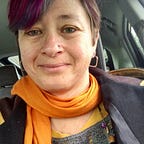This haunting chant — written by Reverend Jason Shelton — will not let me be. I am singing it all the time in my head (and heart). And sometimes aloud. It will not let me alone.
And neither should it.
I wish I could sing it to you. Because it should not let you be either.
I wish I could sing it to the whole nation. Because it should not let the nation alone.
We want our children back.
We want our children back.
There are too many gone too soon.
I wish I could sing it to the current president, sitting pretty (well, he himself, he his-soul, not so pretty) in the White House. I wish I were an ethereal spirit, a haint, moving through solid walls and closed doors, moaning it, ceaselessly. I wish I could sing it to his guest on Thursday night, the odious CEO of the National Rifle Association, Wayne LaPierre.
We want our children back.
We want our children back.
There are too many gone too soon.
Thursday, December 14. Of all the days, 365 of them in a year, the current sitting president invited to the White House the head of the lobby that ensures easy access to guns so that we can be assured of an ever-increasing number of mass shootings. Thursday was the 5th anniversary of the Sandy Hook massacre.
On that same say, in the morning, I was among four hundred who gathered to commemorate the 28 lives lost in that massacre. It was there that we sang that mournful chant.
We want our children back.
We want our children back.
There are too many gone too soon.
Yes, 28 lives. While it is common to ring a bell for 26 deaths that day — 6 adults and 20 children — whom Adam Lanza murdered at the school that day, my heart and my faith recognizes that lost too were the mother he murdered first, and then his own ruined life. I think here of the pastor poet Stephen Philbrick’s lines:
I rang all the children murdered by one more ruined boy.
Six for the teachers.
One for his mother
and one at the end for the man he never became.
We gathered on the sidewalk across the street from the headquarters of the NRA. I learned there that this gathering was the 59th such gathering. I learned that since the massacre, on every 14th of the month, starting the month immediately after the tragedy, people have gathered at 11250 Waples Mill Road in Fairfax, Virginia, to protest the gun chaos in our country, the needless deaths, the choice of greed over humanity, that this organization foments.
Every month, people show up. Sometimes it’s a smaller group; sometimes it’s a larger group. On the year anniversaries, like this week, the size of the group swells. Mostly it’s a group secular in nature; this year’s anniversary gathering brought the National Interfaith Clergy Witness, aiming to bring moral clarity to this terrain besotted with greed and violence. That is how I, as a Unitarian Universalist minister, ended up on the sidewalk, in the cold, singing over and over again.
We want our children back.
We want our children back.
There are too many gone too soon.
It was the first time I had been to the NRA headquarters — a visitor from out of state. Some of the folks there are regulars. None of us there — including, I am guessing the folks who have been at all, or most, of the 59 protests — thinks that their showing up that one time will sway this powerful lobby.
So, one might wonder why show up for something like this? Why take a stance? Why roll ourselves into this uncomfortable space of confronting such a mighty force? Why keep showing up if it doesn’t fix what is broken about our gun safety policies and laws?
In seeking an answer to this question (for it sits in my heart, so I want an answer not only for you, dear reader, but also for me, as well), I am reminded of a story from Rabbi Marshall T. Meyer (which is a much older parable that goes back to Rabbi Israel Friedman of Ruzhyn) about why we pray:
“Once, in a village far from the noise of the world, the only watchmaker there died. One after another, the villagers stopped winding their watches. All except one man who, although he knew without a doubt that his clock was not working well, continued winding it every day. Years later, another watchmaker finally arrived in the village: he was unable to repair any of the broken clocks because their delicate mechanisms had rusted, except for the man who had diligently wound his watch day after day. The same happens with prayer. We must continue praying even when we don’t always feel that we are really concentrating in our prayer, because the delicate mechanism of the human spirit can also easily become rusted.” (You Are My Witness: The Living Words of Rabbi Marshall T. Meyer)
People show up every 14th of every month in front of that fortress of a building and it’s a kind of prayer. It’s an act of faith and of hope. They are winding the clock of hope for all of us. In the winter cold. In the summer heat. On days that they don’t want to. Each time they show up — each time they wind the clock — it does not fix our broken system, but it does mean that it will be possible, one day, to repair the breach that has been created by this gun culture run amok.
We want our children back.
We want our children back.
There are too many gone too soon.
